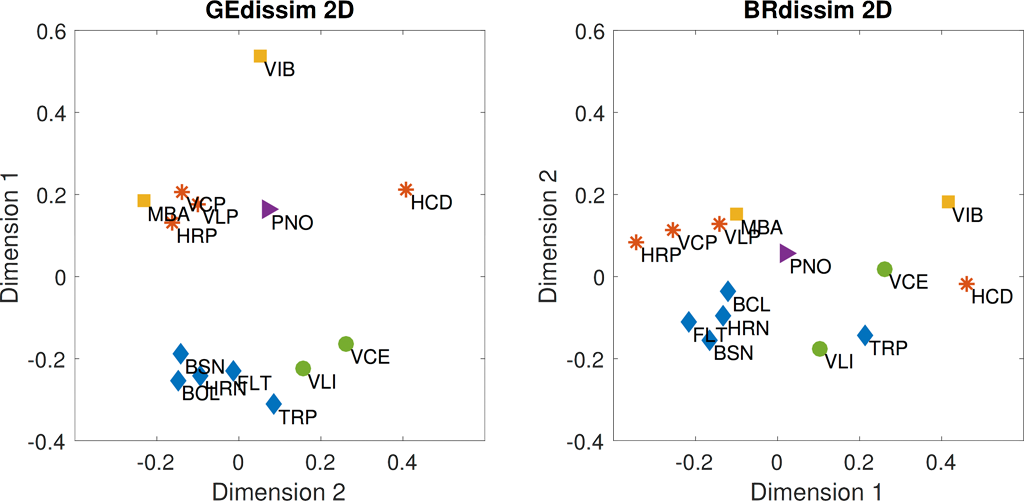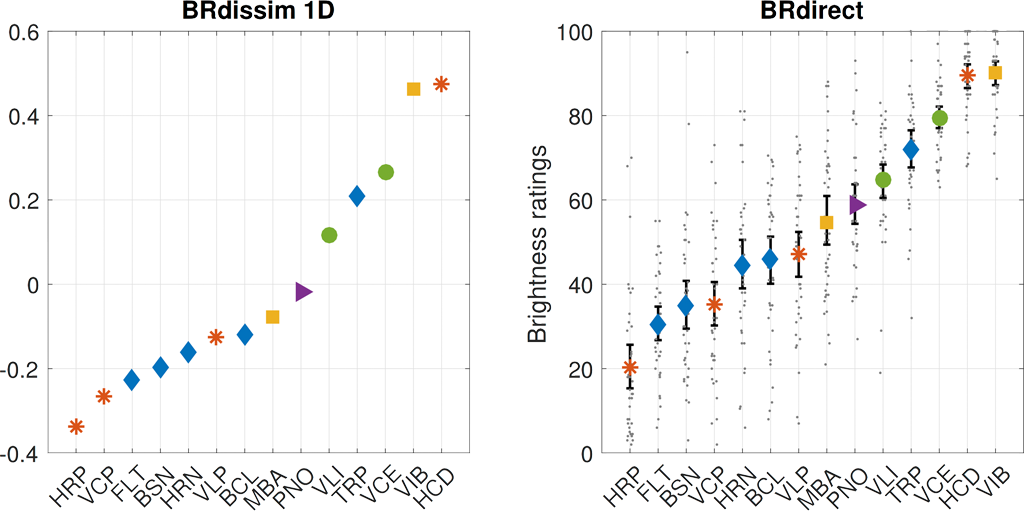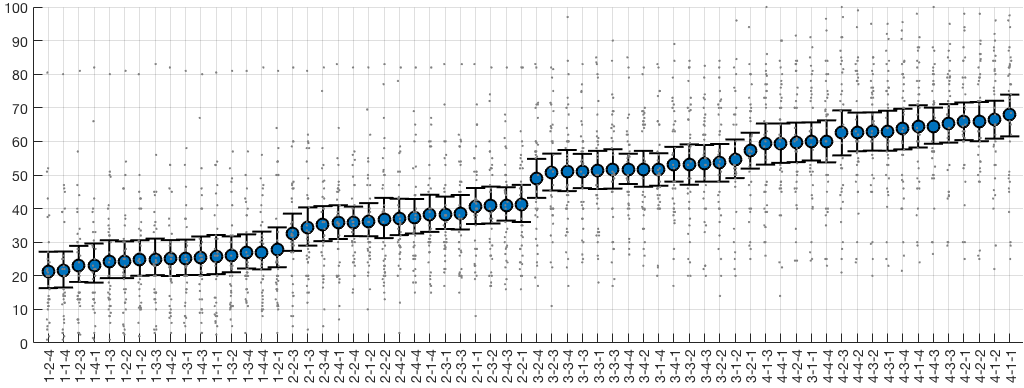Brightness dimension in timbre space are not “purely” spectral. Acoustic instrument sounds exhibit an inherent correlation of spectral and temporal features |
Brightness dimension in timbre space are not “purely” spectral. Acoustic instrument sounds exhibit an inherent correlation of spectral and temporal features |


|
Results (Study 2): Evidence
of influence of (log) attack time on brightness perception—likely
not a “pure” effect but rather due to an interaction with spectral
centroid. |

Mean Brightness Ratings of 36 listeners (Caclin Stimuli)

|
Main Results: Brightness
dimension in timbre space are not “purely” spectral. |